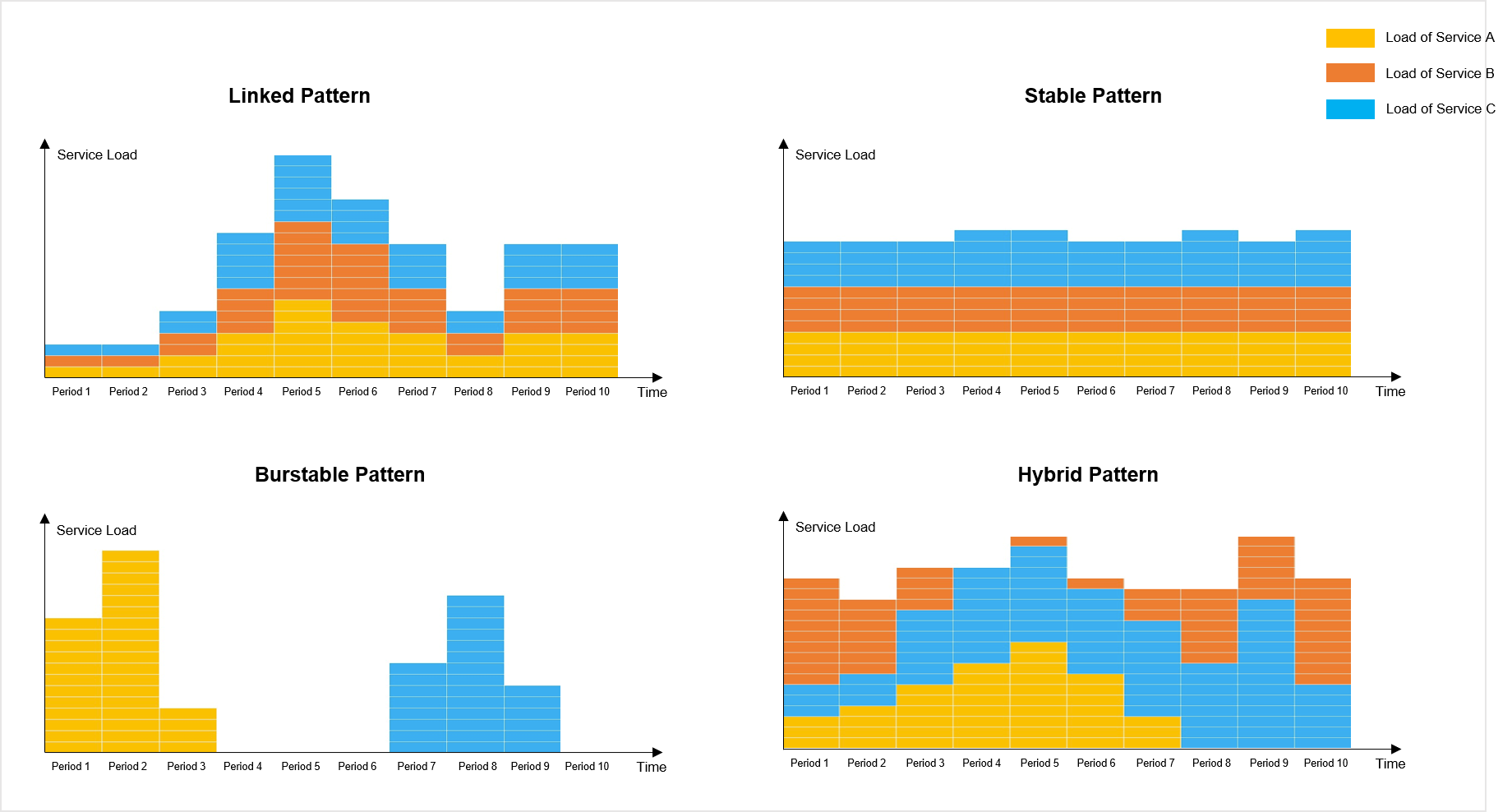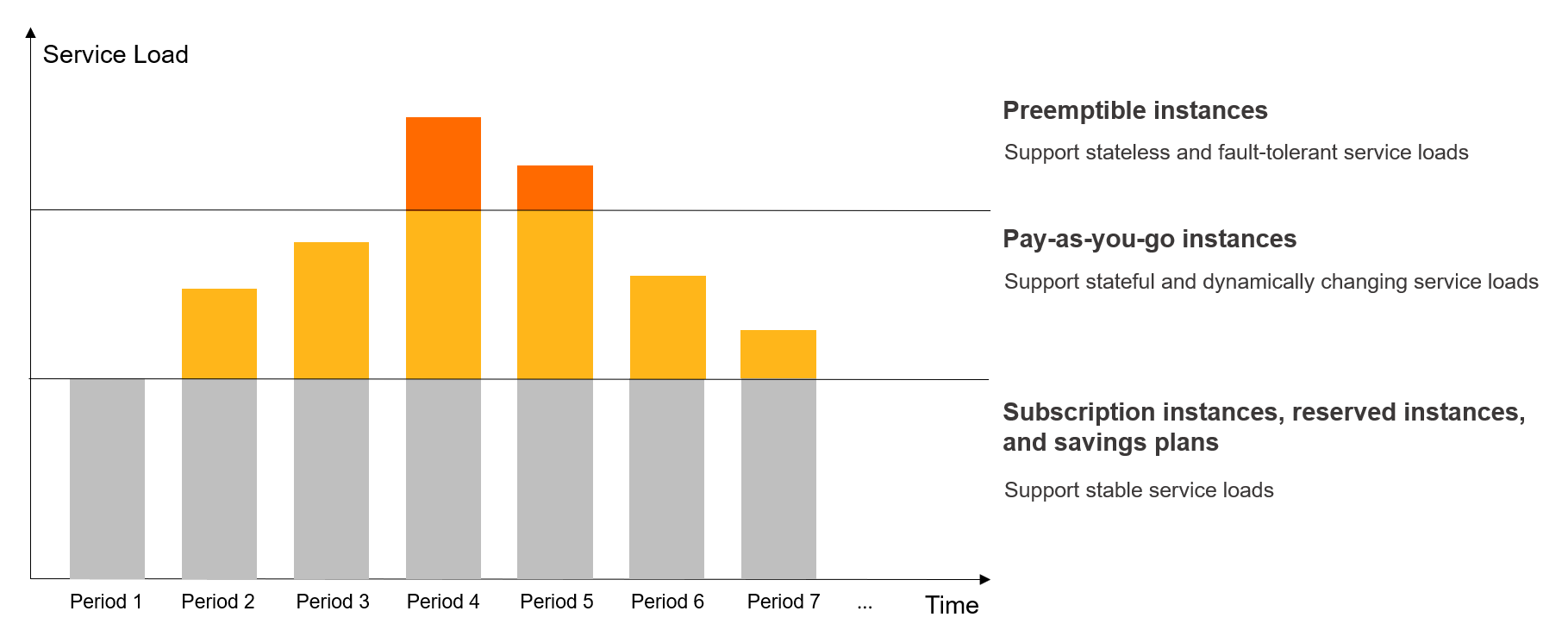Billing method | Subscription | Pay-as-you-go | Preemptible instance (Spot) |
Billing rule and payment model | Prepayment (payment before use of resources) Fee = Unit price of an instance type × Subscription duration. | Postpayment (payment after use of resources) The usage duration is accurate to the second, and bills are generated per hour. Fee = Unit price of an instance type × Usage duration.
Note Reserved instances or savings plans can be applied to get significant savings on pay-as-you-go instances. For more information, see the "Reserved Instance and Savings Plan" section of this topic. | Postpayment (payment after use of resources) The usage duration is accurate to the second, and bills are generated per hour. Preemptible instances are created from spare ECS capacity, and are available at a fraction of pay-as-you-go prices. However, these instances may be reclaimed by Alibaba Cloud with short notice. The prices of preemptible instances fluctuate with changes in supply and demand. You are charged based on the actual usage duration of instances.
|
Cost-effectiveness | Subscription prices are much lower than pay-as-you-go prices. | Pay-as-you-go prices are higher than the prices applied when other billing methods are used. Reserved instances offer a bulk discount on the hourly charges for pay-as-you-go instances. The discounted hourly rates are close to subscription prices. Savings plans provide significant savings compared to pay-as-you-go prices, in exchange for a one- or three-year hourly spend commitment. Savings plans are priced slightly higher than reserved instances.
| Prices fluctuate with changes in supply and demand. Preemptible instances can sometimes be available at up to 90% less than pay-as-you-go prices. |
Use scenario | Business that requires long-term, consistent use of resources over a predictable period of time, such as web services and database services that run 24/7. | Applications with short-term, fluctuating, or unpredictable workloads, such as temporary scaling, testing, and flash sales. | Applications that have urgent computing needs for large amounts of additional capacity, such as temporary scaling, testing, and scientific computing. |
Instance release | Before you can release an unexpired subscription instance, you must change it to a pay-as-you-go instance. If you do not renew an expired subscription instance within a specified period of time, the instance is automatically released.
| You can release pay-as-you-go instances at any time. Release pay-as-you-go instances that you no longer need at the earliest opportunity. You are still billed until these instances are stopped and released due to overdue payments. | You can release preemptible instances at any time. Preemptible instances may be automatically released when the market price exceeds your bid or when the resources for the instance types are insufficient. |
Change of billing methods | Change the billing method of an instance from subscription to pay-as-you-go | Change the billing method of an ECS instance from pay-as-you-go to subscription | Not supported. |
Change of instance types or bandwidth configurations | Supported. | Supported. | Not supported. |
Use of subscription Alibaba Cloud Marketplace images | Supported. | Not supported. | Not supported. |
Internet Content Provider (ICP) filings for websites hosted on instances that are deployed inside the Chinese mainland | Supported. You can apply for ICP filings only for instances that have a subscription duration of at least three months. Note You must purchase public bandwidth. | Not supported. | Not supported. |
Creation of instances by calling API operations | Supported. | Supported. | Supported. |
Free use of Security Center Basic and CloudMonitor Basic | Supported. | Supported. | Supported. |
 Elastic Compute Service (ECS)
Elastic Compute Service (ECS)
 Container Compute Service (ACS)
Container Compute Service (ACS)




























